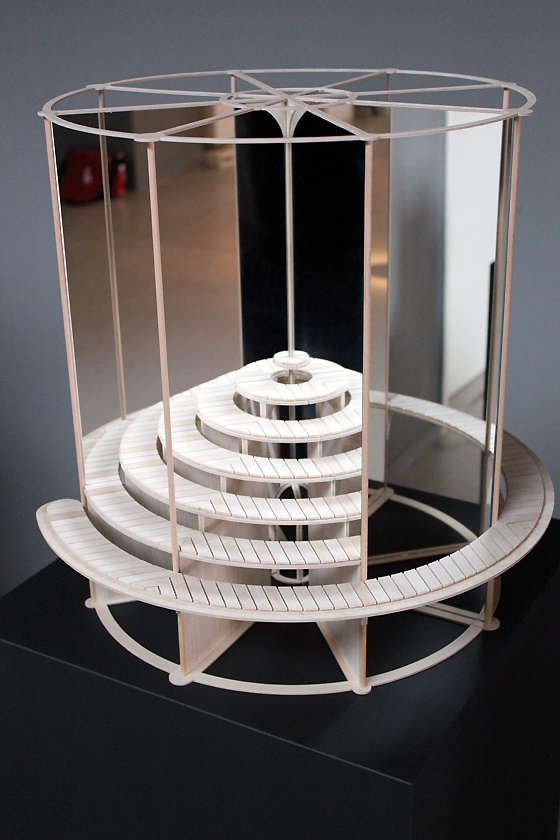Art has a very distinct function according to Inti Hernández: it should encourage dialogue. To achieve this, Inti Hernández has chosen architecture and industrial design as his fields of interest: two disciplines that are very much connected to everyday life. As a visual artist, he is constantly looking for the communal aspect and for cooperation. He explores social meanings of classic meeting places in his drawings and sculptures, for example a roman theatre or a square often represented as circles, cross sections and axes.
These three-dimensional works of art look like complex wooden structures full of staircases, levels and mirrors. Very often, these buildings only partly exist in reality: mirrors are used to complete them in an illusionary way. The visitor can bring them to life by participating in the work: the full circle is only achieved during a dialogue with the spectator. Apart from making the work complete, mirrors also have another role: confrontation and self-reflection. By engaging in these artworks visitors are confronted with themselves and with others. This is how Hernández evokes dreams, ideas, spontaneity and initiative.
The vision of Hernández is clearly expressed in the work Encounters (Ice trays) from 2010. It consists of trays for ice cubes shaped like the English and Spanish words for ‘friend’ and ‘enemy’. Both of them will melt in a drink which means they will come together in a new and joint goal. Hernández sees life as an endless and recurring flow of energy. This view is reflected in his work. The question should not be what we take out of it to enrich our own life, but what we can contribute to it.

